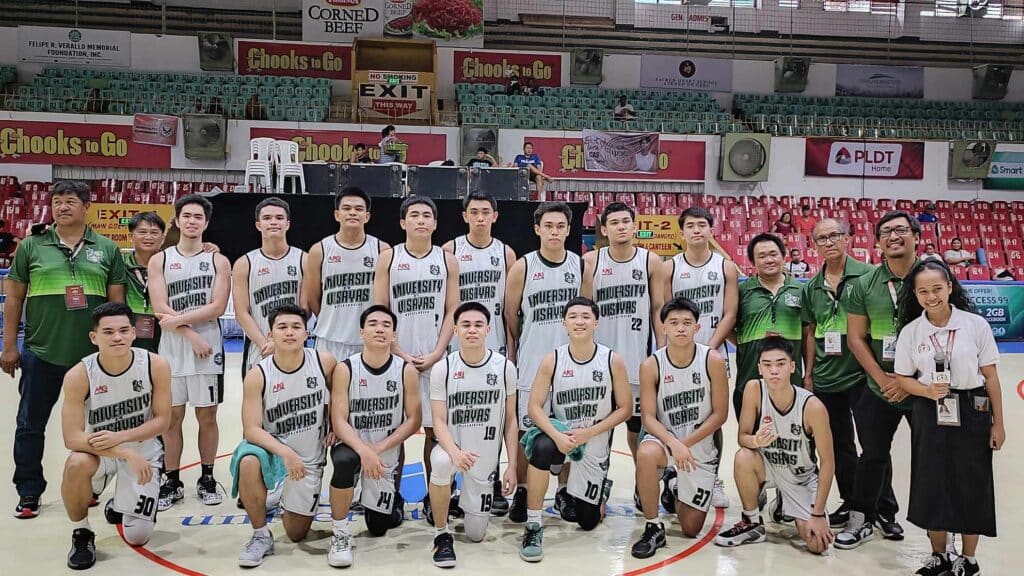
To say that the start of a new era for the Macau Grand Prix was incident-filled would be an understatement. Five red flags in Q1. Seven red flags in Q2.
Drivers summoned to an extra compulsory FIA briefing to be read the riot act. Then more crashes, a red flag and multiple safety cars in the main race itself. General How Macau's red flag chaos shows the FIA is right to tackle driving standards Throw in the extra challenges caused by a typhoon bringing in bad weather, meaning there was little opportunity all weekend for many consecutive laps of running, and it was no surprise that frustrations bubbled to the surface.
Alex Dunne, one of the pre-event favourites whose hopes were wrecked when he got caught up in someone else’s accident at the start of second qualifying , did not hold back in his frustrations. “I'm going to be completely straight and honest, this weekend has been pretty awful,” he said. “As a driver, of course, it's very enjoyable.
But to be honest, the enjoyment aspect of Macau this weekend, we haven't really got to enjoy it because we haven't done more than two or three laps in a row at all.” A question of experience? Watching from afar, it would be all too easy to link last weekend’s difficulties to Macau’s switch away from F3 and to the Formula Regional category . Conditions did not aid drivers across the Macau event Photo by: Macau GP The move towards cars that are, from a safety and speed perspective, much better suited to the tight Guia circuit was always going to mean a younger and more inexperienced field.
While certainly, there were some drivers who perhaps found the challenge of Macau a step above anything they had experienced so far in their career, actually the roots for what played out last weekend went far deeper than it just being a case of youthful exuberance. First of all, the weather did not help. The rain triggered by a nearby typhoon wiped out the prospect of any dry running in practice.
"Some of the inexperienced drivers crashed maybe because they were pushing too hard initially at a track where you have to get the laps in and keep your confidence" Oliver Goethe That meant the first dry laps any FR driver put in were in final qualifying – when the pressure was on to deliver instant laps. This created what FIA Drivers’ Commission member Emmanuelle Pirro referred to as a literal ‘perfect storm’ that exacerbated many aspects. A lack of time to build up confidence and the fear of red flag interruptions being more common, because of a less experienced field, meant it essential for everyone to deliver quick laps instantly - which then increased the chances of a crash and more red flags.
It became almost a self-fulfilling prophecy. Rather than being able to build things up over a longer run with some banker laps in the bag, drivers had no choice but to push from the off – and that was a recipe for trouble around a low-grip street circuit whose barriers offer no room for error. As eventual runner-up Oliver Goethe said: “I think some of the inexperienced drivers crashed maybe because they were pushing too hard initially at a track where you have to get the laps in and keep your confidence.
Then, putting it in the wall, just destroys that.” Goethe finished second after being unable to find a way past Ugochukwu Photo by: Macau GP Crashes in qualifying at Macau are not a new thing, but what was perhaps telling this time around was that the majority of the incidents were on the first push laps – rather than final runs where drivers throw caution to the wind in a bid to eke out some extra tenths. Pirro, who was on-site in Macau, said he spent a great deal of time looking into the circumstances of all that played out in Macau.
“Hopefully we all learned a lesson,” the five-time Le Mans 24 Hours winner said. “Because I think when we did the extra briefing, when you saw the faces of the drivers, I think everybody realised that that was too much.” Pirro believes the core issue here was not a lack of experience for the drivers racing last weekend, but more a widespread mindset problem that modern racing has instilled in almost all rising stars.
“If you see the cause of every single red flag, I think it goes across all the span of the drivers’ ability, from the less experienced to the more, without mentioning names,” he continued. “I don't think it's a fair analysis to say some less experienced drivers should not be racing here, because the evidence of this small, small timeframe of this weekend did not really confirm that in my opinion. “For me, where we all should work is to change the mindset of the drivers, and this is a very, very broad problem issue and picture.
” Pirro suggests that there are some key elements at play here – which includes the fact that many drivers cut their teeth on modern tracks that have generous run off areas where mistakes are punished only by a lap time being deleted, rather than a hefty repair bill because of a crash. There was a wide variety of experience on display in Macau Photo by: Macau GP That has provided a comfort blanket for the current crop of drivers not being worried about taking things beyond the limit. “I think the mindset of today's drivers, because of how motorsport is shaped, especially its circuits, is that you cannot accept not to give your 100% every single time,” added Pirro.
“So how do we change this mindset? I think some of this responsibility is on the teams to down-tune the drivers’ mindset. It is saying that in practice in Macau, your best lap is always your last lap, not your first lap: providing your first lap is not your last lap. So I think there is some work to do on the mindset of the racing drivers.
” “It is a street circuit first, so definitely the drivers need to have a different approach" Benjamin Schmidt Benjamin Schmidt, team manager of the R-ace GP team that winner Ugo Ugochukwu drove for, suggested that some perhaps underestimated the unique challenges of Macau. “It is a street circuit first, so definitely the drivers need to have a different approach,” he said. “Especially for the first time, I think it's better to build up the confidence, rather than finding the limit straight away in the first push.
“But the conditions were quite difficult to do that for the drivers, because it was wet conditions just before quali and then quali was the first time we put slicks. So I think it was not an easy task for the drivers, but definitely the driver preparation was a key point.” And, while Friday’s emergency drivers’ briefing showed how patience ran thin with officials about what had played out on track, Pirro sensed some improvements from that moment on as reality bit.
Schmidt believes other Formula Regional drivers need to change their approach to tackling the streets Photo by: Macau GP “I believe what happens sometimes is you have to reach an extreme to make a change,” he added. “Not one bad Friday will change the mindset, but definitely something changed because when you walked across the paddock, there were a lot of people crying, and a lot of people thinking: ‘I should have done different.’” But what about the cars? While the topic of questionable driving was the main topic of discussion, one element that proved a success in Macau was the choice of car itself – and what that means for the future.
With F3 having got perhaps a bit too quick for Macau, the decision to switch it to Formula Regional was aimed at having something much better suited to the famous Guia circuit. The lap time difference between the F3 cars in 2023 and FR last weekend was notable – with the cars being around 14 seconds slower this time around. This pace is similar to where F3 was when it first began visiting Macau in the early 1980s.
But there are wider benefits in having FR cars, as it opens up the possibility of Macau returning to its glory days of being an event that brings the best young talent together from all around the world. The evolution of F3 over the past decade, where it moved away from strong national championships to become unified under an FIA banner, meant that the days of Macau being about the best teams and drivers from around the world meeting up for a special one-off had long gone. Lap times increased by 14 seconds from last year with the switch from F3 to FR machinery Photo by: Macau GP Now, with the FIA pushing FR and hoping to build up some strong national championships, that chance for Macau to become the focus of a proper ‘World Cup’ event is back on the table.
There are already signs of that happening, with TOM’S back at Macau for the first time in years. Javier Maffioli, the FIA’s head of junior categories, said: “The model of the Formula Regional product is boosting this criteria. We are working with different ASNs around the world in order to develop the concept in many regions.
At the moment, we are in six, and the hope is to increase it and perhaps consolidate it in places like, for example, the US or Japan. “I think that naturally, when each region will be consolidated, the level [of talent] will be growing – and this will be helped by Macau. We cannot pretend that this has happened today unfortunately, but it was important to start now because otherwise there is no evolution.
” “The main point is to recreate the concept of the World Cup. I think the Formula Regional perfectly fit, because maybe last year F3 was a bit over the limit" Rene Rosin Prema boss Rene Rosin concurred that the switch to FR was a positive thing, because of the potential benefits it can bring in the future. “I think the concept is correct,” he said.
“The main point is to recreate the concept of the World Cup. I think the Formula Regional perfectly fit, because maybe last year F3 was a bit over the limit in terms of power and speed that you can reach on the end of the straight.” Keeping the jewel While last weekend may have marked a tricky start for the new Macau FR, progress in life is never made if there are not some challenges along the way.
The cars seemed right, the track remains iconic – and if the right balance of drivers can be slotted in, then all the ingredients are there to deliver a very bright future for the Macau Grand Prix. Beganovic was among the F3 drivers who stepped down to Formula Regional in a bid to have Macau victory on his CV Photo by: Macau GP As Rosin said: “If you start in having top Regional and F4 drivers, and you have some F3 guys coming down, we are back in the old time where we have the best drivers in the world at that age participating in Macau. “This is something the FIA needs to work on, with the support of all the teams.
We are all behind this, especially us. “We have been coming to Macau since '84, and we are partnering with Theodore Racing, which is a Macau team in the end. We love to be here.
We love these races. We love racing here in Macau. And there needs to be a long-standing future for this race.
” From the FIA’s perspective, Macau is seen as an essential part of the global motorsport ecosystem. Pirro added: “I think to bring Formula Regional here for me, as a person and me as an FIA figure, has been a success. “Personally, I believe in this race, very, very much.
I think this race is a unique jewel that should be preserved for a long time." The Formula Regional model returns Macau to a truly international event Photo by: Red Bull Content Pool.













